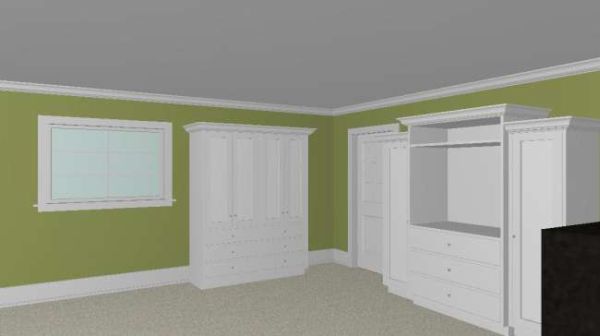Fastener Choice for Applied Mouldings
It comes down to a choice: V-nails from the back side, or 23mm micro-pins from the front. August 15, 2011
Question
I am making doors with applied molding, and thinking about pre-nailing the trim from the back side with corrugated nails. I wanted to hear some input from guys that use them, before I make the investment. The material I plan on using is hard maple.
Forum Responses
(Cabinetmaking Forum)
From contributor W:
Use a 23g micro pinner from the front and glue. The holes are extremely small and can be filled in.
From contributor S:
I don't know if I would use a corrugated nail for that. What you need to look for is an underpinner or V-nailer. Both are basically the same machine. Those machines are used to do exactly what you are looking for. I have a Cassese underpinner that we use when we make applied moulding doors.
From the original questioner:
After doing some searching I found what you are referring to. I decided to buy a pneumatic picture frame nailer. It shoots the V nails, hopefully it works out.
From contributor W:
With all due respect as a fellow woodworker, I have to say bad decision. I have done many applied moldings on doors with the 23g micropinner with great success.
From the original questioner:
I have a 23g pin nailer, but I just am not confident in it for this application. The doors are to be painted white, so I can't chance any separation in the joint or it will show up noticeably. I have bought several doors over the years from Decorative Specialties and never had any problems with their applied molding doors. I tore one of their doors apart the other day to see how they are putting them together and they are using the same V nails in their joints. By nailing the joints together with the V nails it will hold together from top to bottom of the miter, not just the top corner using a pin nailer. I am not saying your way won't work, I just feel better doing it this way.
From contributor S:
I guess it depends on what type of applied moulding you are talking about. If you are putting a small moulding on the surface of a MDF door, then a micro pin nailer would probably do the job. If you are talking about applying a moulding to a solid raised or flat panel door that is something different.
You need to keep in mind that a solid wood door moves and if you nail the moulding to the door, the joints will open as the door expands. What you are looking to do with underpinning is to make a floating frame out of the moulding. A few small 23 gauge pins are all that is needed to hold the moulding frame to the door. If you underpin the corners you can make the moulding frame slightly smaller than the opening so it leaves enough room for the door to move.
If you have a lot of doors to do I would suggest that you seriously look into a V-nailer or underpinner rather than a hand held staple gun. Both of those machines can be found from a small table top version to a complicated floor model. These machines have a top clamp as well as corner clamps to hold the joint while nailing. Unless you make some sort of jig to do the same, it will be hard and time consuming to hold the joint while using the staple gun. Any slight misalignment will show up like a sore thumb when you stain or paint.
From the original questioner:
I am putting an applied molding on a five piece door with a hardwood frame and flat MDF panel. I plan on nailing the molding together like a picture frame, then setting it inside the frame of the door. The molding is made so it lips over the face of the door. The way the molding is designed, it will need to be pre nailed with a "V" nail or something similar.
